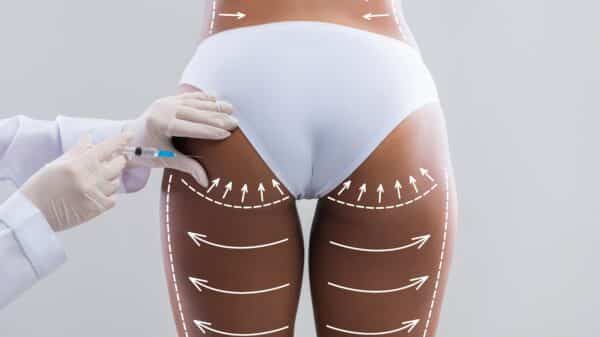Mental health and well-being have taken the spotlight with Gen Z, redefining how we approach therapy and self-care.
This generation has increasingly turned to more creative outlets to express themselves, cope with stress, and heal emotionally.
From art and music to dance and drama, these outlets help uniquely resonate with differing experiences.
So what are the reasons behind the increasing popularity?
Creative therapy is open to anyone of all ages and allows people to engage in new ways of communicating emotions.
This is particularly helpful to those who find it difficult to put emotions into words.
Mind UK states that they:
- Help you make sense of things and understand yourself better
- Give you a safe time and place with someone who won’t judge you
- Help you find new ways to look at problems or difficult situations
- Help you to talk about complicated feelings or difficult experiences
- Give you a chance to connect with other people
These therapies often have options for group or individual sessions to reduce anxiety. This is also something you can practice individually.
Let’s delve deeper into the different types!
Art Therapy
Art therapy is one of the most popular forms of creative therapy. Sessions can involve a variety of art materials from paint and pencils to more digital mediums such as photos and videos.
You can follow a particular theme or allow yourself to get lost in the moment. There is no judgment and your creative freedom can run wild!
A therapist can help you decipher what your art is trying to explore emotionally or you can use it as a personal outlet to do in your spare time.
“Art speaks where words are unable to explain.” says textile artist, photographer and illustrator Pam Holland.
This nurtures new perspectives and insight by studying your art and looking deeper into the themes you create and the colours you are drawn to.
Science also has a part to play when creating your masterpiece!
Neuroscientists suggest that “the brain’s reward pathways become active during the creative process. This reward system, engaged during enjoyable activities such as eating and laughter, can also be triggered by creating art, leading to dopamine release.”
Dance Movement Psychotherapy
Otherwise known as ‘dance therapy‘, this method involves using body movement and language to express yourself.
Dance portrays a lot of emotional undertones as it is by using different types of rhythms and music. You don’t need any experience, the aim is to feel more in touch with your body and give a diverse voice to your emotions and experiences.
When you feel more in touch with your body, it can help address difficult feelings such as how you feel in your skin.
Dance allows you to feel one with your body and take control, reducing stress, anxiety, and depression.
A study from the journal “The Arts in Psychotherapy (2007) found that dance therapy had a positive effect on participants experiencing symptoms of depression.”
In a specialized dance movement psychotherapy session, the therapist will help you explore the meaning and emotions behind your movements. They can help guide your self-expression through movement to provide an outlet and assist you with the feelings that may be brought up.
Dramatherapy
This therapy helps explore personal and societal problems through roleplay, and voice work, providing a great way to express yourself through a storytelling narrative.
You don’t need any acting skills or experience; not all activities need to necessarily involve talking. Take miming for example! This allows those seeking the therapy to be as creative and spontaneous as they like.
Dramatherapy aims to build self-confidence and self-awareness. This can be done with a therapist one-on-one or in a group.
An article states: “A 2021 study of 14 randomized controlled trials, and one semi-randomized controlled trial that included 642 people, found that this intervention offered relief from various mental health symptoms.”
Participants have been said to have felt confident sharing a new personality side. This can also collaborate with additionally reflecting on their past personality.
Furthermore, this reflection into action helps solve problems, providing relief and personal growth.
Music Therapy
“Science has proven that music releases mood-enhancing chemicals into our body which music therapists can capitalize on to aid in the medical treatment of patients.”
The chemicals released include dopamine and endorphins, both of which are ‘feel good’ chemicals!
Music therapy allows you to explore sound and music. This works as a way to communicate and explore your feelings.
Music therapists can offer instruments for you to use or you can use the power of your voice.
Alternatively, some sessions may involve listening to music and exploring the meaning behind the sounds or lyrics to see if they resonate with you.
However, if you prefer to do this by yourself, this also has many benefits! A lot of musicians use their music as a way of expressing their emotions, such as heartbreak or depression.
There is no right or wrong way to approach this; what matters is that you use it as a constructive outlet that can help you explore those challenging emotions more deeply or become accustomed to exploring happy emotions.
Science states that: “Being able to trigger a feeling of happiness, calm the heart rate and promote relaxation are just a few of the ways this therapy can be used in a medical setting.”
The benefits of music therapy include strengthening your communication skills, building self-confidence, regulating mood, and helping you form healthy coping skills.
How are they helpful?
As explored, these forms of creative therapy help us delve deeper into personal understanding.
It’s very easy to get caught up in your emotions and if you find talking therapy to be too daunting, this may be the better alternative for you.
Embracing these different methods reflects broader values of authenticity and self-expression. This is important to rediscover yourself while fostering a sense of connection and community.
The future of therapy looks brighter, more colorful, and profoundly more human for those seeking personal growth and emotional relief.
This provides a promising step forward in aiding mental health.














